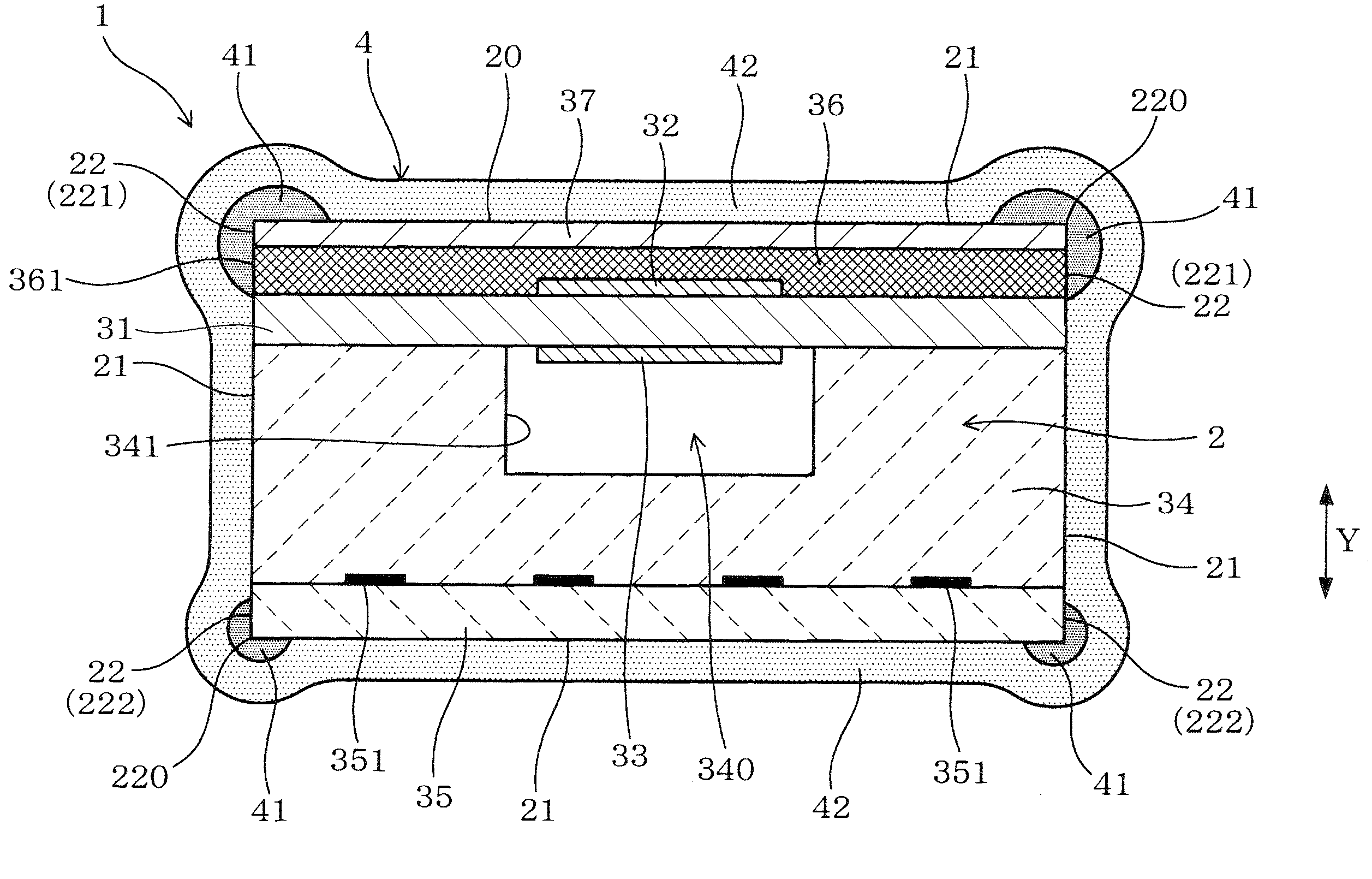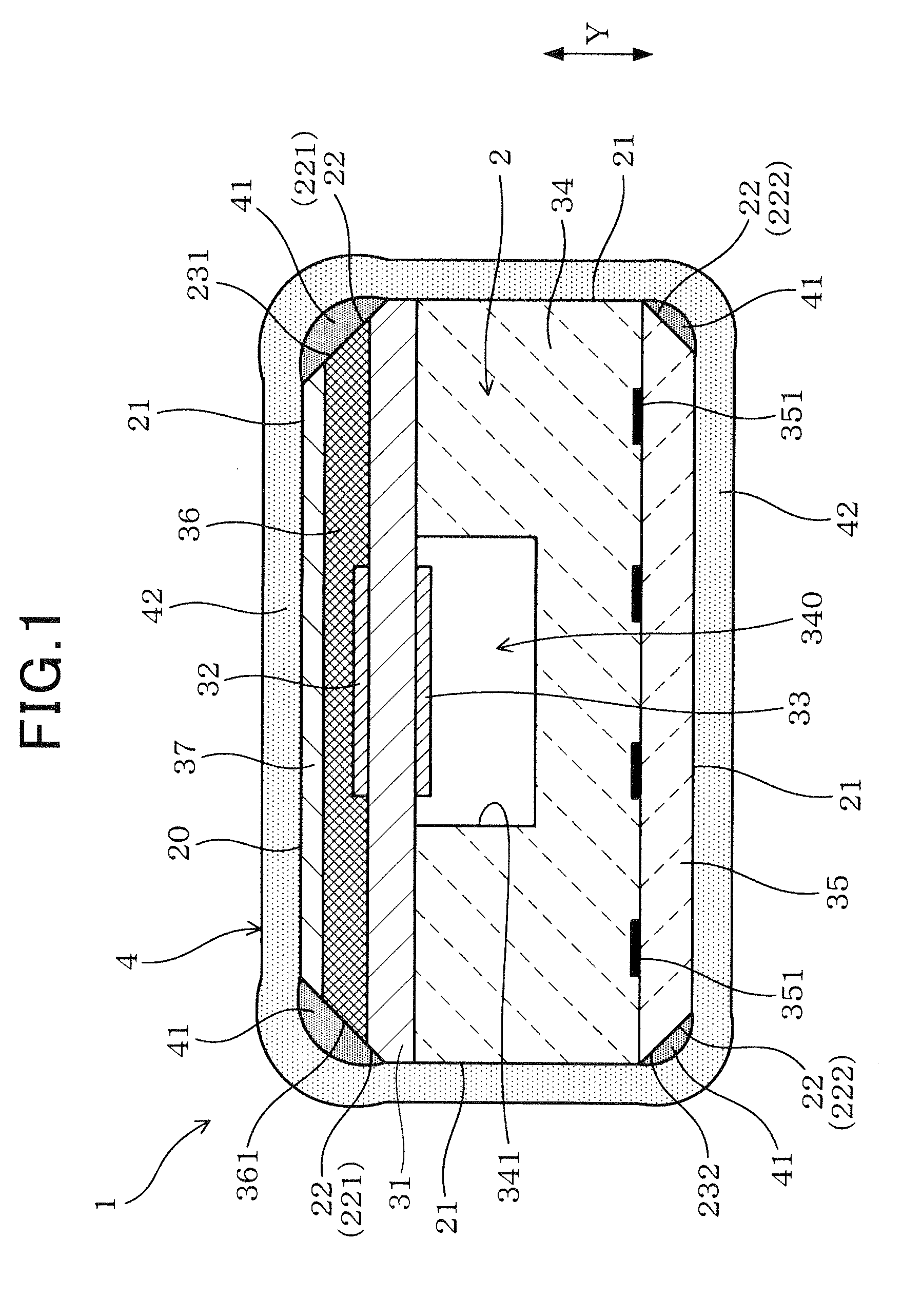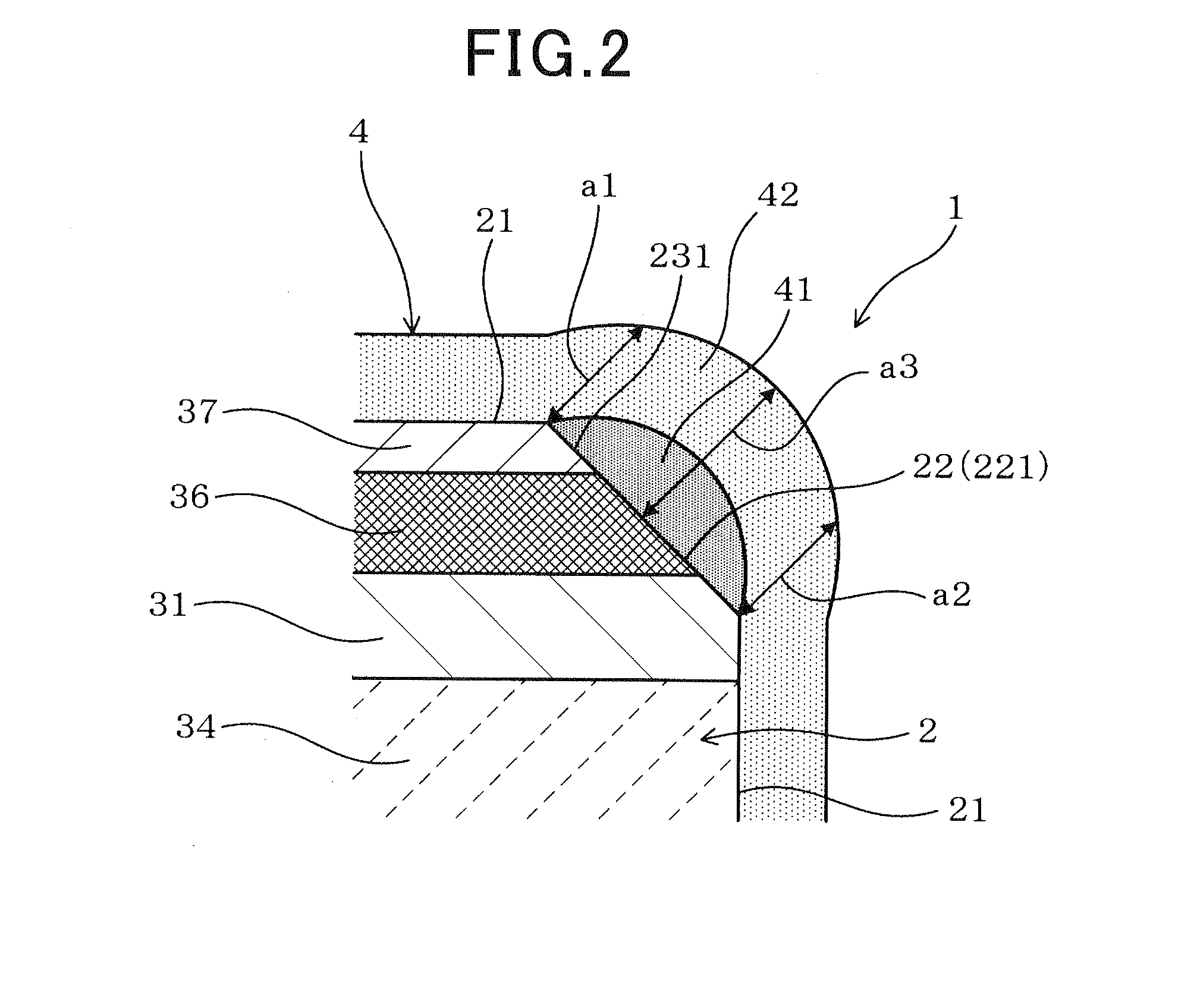Gas sensor element and its manufacturing method, and gas sensor employing the gas sensor element
- Summary
- Abstract
- Description
- Claims
- Application Information
AI Technical Summary
Benefits of technology
Problems solved by technology
Method used
Image
Examples
first embodiment
[0057]FIG. 1 illustrates the overall configuration of a gas sensor element 1 according to a first embodiment. FIG. 2 shows a corner portion of the gas sensor element 1.
[0058]As shown in FIGS. 1 and 2, the gas sensor element 1 has a main body 2 that includes a solid electrolyte body 31, a measurement electrode 32, a reference electrode 33, a heater layer 35, and a porous diffusion-resistant layer 36. The solid electrolyte body 31 has oxygen ion conductivity and a pair of first and second surfaces (i.e., the upper and lower surfaces in FIG. 1) that are opposite to each other in a lamination direction Y of the main body 2. The measurement electrode 32 is provided on the first surface of the solid electrolyte body 31 so as to be exposed to a measurement gas (i.e., a gas to be measured). The reference electrode 33 is provided on the second surface of the solid electrolyte body 31 so as to be exposed to a reference gas. The heater layer 35 is laminated on the same side of the solid electr...
second embodiment
[0132]This embodiment illustrates a gas sensor element 1 which has a similar configuration to the gas sensor element 1 according to the first embodiment; accordingly, only the differences therebetween will be described hereinafter.
[0133]In the first embodiment, the inner protective layer 41 is formed on the main body 2 of the gas sensor element 1 so as to cover all the four corner portions 22 (i.e., the pair of first corner portions 221 and the pair of second corner portions 222) of the main body 2 (see FIG. 1).
[0134]In comparison, in the present embodiment, as shown in FIG. 6, the inner protective layer 41 is formed on the main body 2 of the gas sensor element 1 so as to cover only the first corner portions 221 of the main body 2. That is, in the present embodiment, each of the second corner portions 222 of the main body 2 has no inner protective layer 41 formed thereon.
[0135]With the above configuration of the gas sensor element 1 according to the present embodiment, it is also po...
third embodiment
[0136]This embodiment illustrates a gas sensor element 1 which has a similar configuration to the gas sensor element 1 according to the first embodiment; accordingly, only the differences therebetween will be described hereinafter.
[0137]In the first embodiment, each of the first corner portions 221 of the main body 2 is chamfered to have the chamfer surface 231; each of the second corner portions 222 of the main body 2 is also chamfered to have the chamfer surface 232 (see FIG. 1).
[0138]In comparison, in the present embodiment, as shown in FIG. 7, none of the four corner portions 22 (i.e., the pair of first corner portions 221 and the pair of second corner portions 222) is chamfered to have a chamfer surface. Therefore, at each of the corner portions 22, corresponding two of the plane portions 21 of the main body 2 intersect each other at 90°.
[0139]Moreover, in the present embodiment, the protective layer 4 has an average thickness of 400 μm at each of the plane portions 21 of the m...
PUM
 Login to View More
Login to View More Abstract
Description
Claims
Application Information
 Login to View More
Login to View More - R&D
- Intellectual Property
- Life Sciences
- Materials
- Tech Scout
- Unparalleled Data Quality
- Higher Quality Content
- 60% Fewer Hallucinations
Browse by: Latest US Patents, China's latest patents, Technical Efficacy Thesaurus, Application Domain, Technology Topic, Popular Technical Reports.
© 2025 PatSnap. All rights reserved.Legal|Privacy policy|Modern Slavery Act Transparency Statement|Sitemap|About US| Contact US: help@patsnap.com



